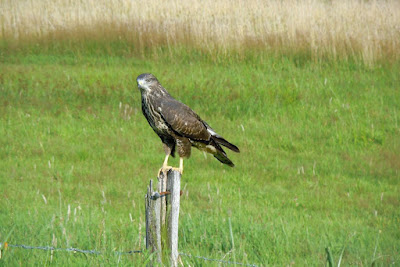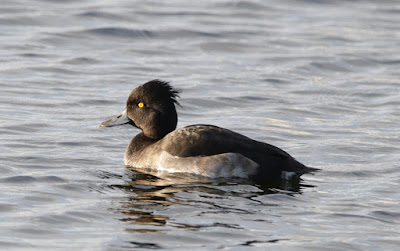Insightful readers will see that Another Bird Blog has been out of action again.
This enforced sabbatical came about through the twin perils of Christmas & New Year coupled with the predicted back end of North America storms that landed on Britain’s doorstep. The result was birding and ringing on the back burner and two morning’s ringing throughout December. It’s a sorry picture but one that I hope to remedy and not repeat in 2023.
New Year’s Day 2023 saw the thirteen strong family at home for the sometimes traditional Meat and Potato Pie with Mushy Peas, a dish that even picky kids might eat if bribed with a promise of cheesecake to follow. Washing the pots took more time than eating the food.
New Year's Day
After the week’s marathon binge a morning in the January sunshine was called for so I struck out north out Rawcliffe/Pilling way on Monday January 2. The sun shone warm at 0900, so balmy that the BBC are already claiming that 2023 is the hottest year on record due to man-made climate change.
Eyes peeled and cap pulled low I drove with care to avoid the prowling year listers with crazed looks in their eyes, out in force for Chase The Bird 2023. However their whereabouts are both easy to predict and to then avoid via a perusal of WhatsApp and the use of tried and tested alternative locations. Originality of thought or deed is not their collective strength.
On the route to Rawcliffe came a super start to the year when I spotted a “shortie”, a Short-eared Owl, approaching from the left and heading my way. Electric windows are a great invention, and as ever the switched on camera lay on the passenger seat for a rapid fire. It’s been ages since I saw a shortie, a largely nocturnal and crepuscular (dusk and dawn) hunter, but still one of the most active British owls during daylight.
Exhilarated by this sighting I stopped at another farm I know well but didn’t anticipate the double whammy of another owl, this time a Little Owl, a species increasingly difficult to locate.
Data shows that Little Owl numbers have shrunk by 65% over a 25-year period through a combination of the usual suspects; over development of their sought after farming landscape combined with shrinking populations of certain prey items like beetles, crickets and the humble earthworm.
Little Owl
My own thoughts are that part of the problem for Little Owls is that they mostly share habitat with introduced game birds like Pheasants and Red-legged Partridges, non-native birds released in vast numbers throughout the autumn and winter by the shooting industry. Historically this is especially true for this part of Lancashire where the loss of Little Owls began around the same time as the large increase in the numbers and locations of shoots, time-on-their-hands shooters and the release of many thousands of game birds into new locations.
Pheasants especially are known to hoover up huge areas of land of the same prey upon which Little Owls and other birds depend.
Here’s some recommended further reading about a serious ecological problem, some might say "disaster" being allowed to take place in the British countryside.
It was tempting to stick around and enjoy the owl, even though it did little but sit around watching and waiting for the next meal, a bit like the Christmas we just enjoyed.
I drove towards Pilling along the Lancaster Road where a large flood gave indication of recent rains. Distant across the field/lake were circa 250 Lapwings, 130 Black-headed Gulls and many thousands of Starlings. There was a shoot nearby with loud bangs that sent the flocks wheeling into the air a couple of times although they mostly all came back, if to a slightly different spot on the expanse of water.
New Year Floods
Further along the main road I saw two Kestrels that may have been paired where neither of them were up for a photo and in any case the picture would have been into the light. Better luck next time from a mental note, a different time of the day, and a more accommodating moment.
By now I was headed towards Cockerham and Braides Farm where Whooper Swans have hung around off and on since arriving from Iceland in September. Counts have been up to 400 when maxed out, more like 250 today. Golden Plovers, Lapwings and Curlews were dotted across the more distant fields with a rough count of 300, 250 and 250 respectively.
Whooper Swans
Our ringing site is yet to receive a visit in earnest and there's no the prospect in sight by looking at the latest forecasts. When I visited to top up the supplementary food all was quiet with single figures of the regulars but a distinct lack of Linnets, the main focus of our project.
All we can do is hope that the forecasters get it wrong! Keep looking in folks.






















































































